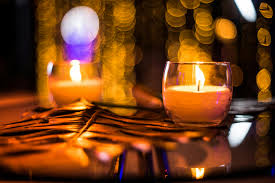The wax and candle making supplies you choose can impact your candle’s appearance, burn time, and scent strength. Knowing your wax options helps you pick the best ingredient for crafting personalized homemade candles. Here are a few tips for choosing the right wax for your homemade candle making projects:
Understanding Wax Types
Each wax has unique properties. Beeswax contains its natural honey scent, and soy holds fragrances while burning slowly and cleanly. Soy’s smooth finish complements decorative container candles. Palm wax develops a crystallized look while Paraffin offers a soft, polished surface and vibrant coloring. This makes it ideal for detailed molded or embellished pillar candles. Knowing these differences helps you choose to create the candle you want. The right wax can prevent issues like frosting, pitted tops, wet spots or mottling.
Analyzing Burn Times
Choose wax that complements your expected burn time to prevent mess or wasted wax. Soy and beeswax sustain a gentle, long-lasting burn for Nova or votive candles. Paraffin burns quickly, which makes it a good choice for tea lights. It helps prevent tunneling by mixing well with gels that support the wick. Slow-melting waxes extend the burn time in candles, allowing for hours of enjoyment and scent release. Faster-melting waxes better suit birthday or luminary candles crafted for short bursts of light. Tailoring your candle wax selection by burn time helps optimize your wax usage and prevents wasted supplies.
Evaluating Fragrance Retention
Fragrance retention refers to the candle’s ability to hold its scent for an extended period. Test wax samples to see which types go best with your desired fragrance oils. Assess how scent strength changes before and after the candle’s burn. Soy’s retentive nature makes it suitable for indulgent spa or bakery scents. Beeswax blends well with floral and earthier aromas. Paraffin allows you to pack in rich, complex fragrance combinations. Some candle making supplies, like soy, are better at holding fragrance to maintain strong scents from the first to last light.
Assessing Environmental Impact
Soy and palm waxes come from renewable plant-based sources. Beeswax utilizes resources formed through natural processes. You can request sourcing information from retailers to confirm claims of sustainable palm wax harvesting. Eco-friendly candle makers may prefer soy, beeswax, or palm waxes free of crude oil derivatives. Testing wax samples helps determine how they contribute to the color depth of dyed candles.
Prioritizing Ease of Use
Blended waxes offer all-in-one formulas ready for melting and pouring. Beginners may want premixed waxes that require minimal measuring or additives. If you are making candles without extensive tools, simple paraffin or soy wax kits contain dyes, scents, and additives for quick assembly. Seasoned candle makers can use more intricate techniques with gel or beeswax that require proper cooling. Match candle-making wax choices with your abilities, so you can practice your candle making skills.
Discover Ideal Candle Making Supplies Today
Choose color and scent additives to create the candle that you want. Choose the right dye and fragrance oil forms for your preferred wax type. Oil-based scents work best with paraffin while soy wax requires specialized soy-compatible fragrances. Testing colorants helps confirm their ability to blend smoothly into your selected candle wax. Look for candle making supplies that improve fragrance throw, burn time, and the recipient’s personality. Order your candle-making wax supplies today.



